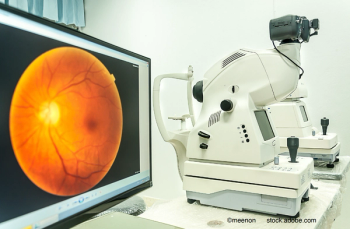
Decreased cone densities may help detect and monitor multiple sclerosis
Decreased cone density was a characteristic of the cases of multiple sclerosis (MS) that were evaluated. This finding may serve as a specific and sensitive method to detect and monitor the development and progression of MS.
Investigators in the UK reported that decreased cone density was a characteristic of the cases of multiple sclerosis (MS) that were evaluated. This finding may serve as a specific and sensitive method to detect and monitor the development and progression of MS,1 according to lead author Gemma McIlwaine, MSc, from the Wellcome Wolfson Institute for Experimental Medicine, Queen’s University Belfast, UK.
While MS recently was reported to be associated with degeneration of the macular ganglion cell-inner plexiform layer and peripapillary retinal nerve fiber layer,2 no study has reported the changes in the outer retina in patients with MS.
In light of this, the investigators conducted a single-center, cross-sectional study to identify possible changes in the outer retina in 16 patients with MS and 25 controls without diagnosed MS.
Ms. McIlwaine and colleagues evaluated spectral-domain optical coherence tomography (OCT) scans of the macula and a circular scan around the optic nerve head (ONH) and they captured adaptive optics (AO) images at 0 (centered on the foveola), 2, 4, and 6degrees temporal to the fovea, she explained.
The main outcomes measures were the thicknesses of the various macular layers and around the ONH using the inbuilt software of the OCT. The changes in the cone photoreceptors were evaluated by calculating cone density and spacing by the inbuilt AO automatic segmentation algorithm with manual correction. The results then were compared in patients with/without optic neuritis and controls.
The investigators observed significant thinning of the inner retina and thickening of the outer retina in eyes with a history of optic neuritis p=0.002 and p=0.001, respectively). No changes were seen in the retinal layers in eyes without optic neuritis.
Regional differences were seen in the peripapillary retinal nerve fiber layer. AO images showed a significantly lower cone outer-segment density at all eccentricities in all patients compared to control eyes (p<0.05), independent of the presence or absence of optic neuritis, they reported.
The authors concluded, “This is the first study to show lower photoreceptor outer densities and spacing in patients with MS, suggesting that AO retinal imaging has the potential to become a sensitive marker for MS. Whether the observed changes in this cross-sectional study can be translated to a larger and more ethnically diverse population will need to be seen.”
References:
1. McIIwaine G, Csincsik L, Coey R, et al. Reduced cone density is associated with multiple sclerosis. Ophthalmol Sci. Published online: April 12, 2023; doi:https://doi.org/10.1016/j.xops.2023.100308
2. Hanson JVM, Hediger M, Manogaran P, et al. Outer retinal dysfunction in the absence of structural abnormalities in multiple sclerosis. Invest Ophthalmol Vis Sci. 2018;59:549 60; https://doi.org/10.1167/iovs.17-22821
Newsletter
Keep your retina practice on the forefront—subscribe for expert analysis and emerging trends in retinal disease management.
















































